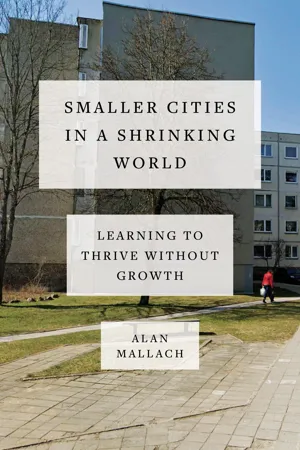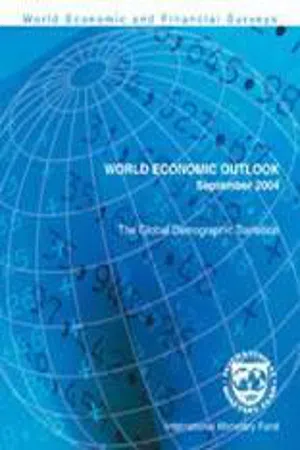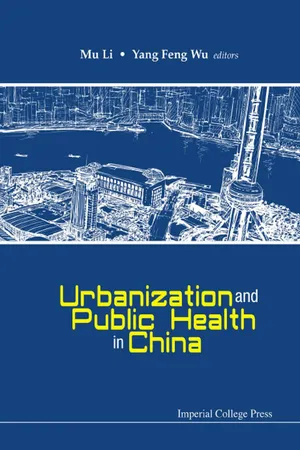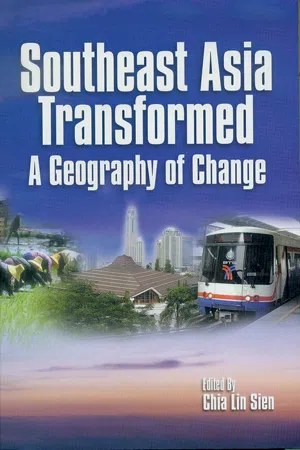Social Sciences
Demographic Change
Demographic change refers to the variations in the composition of a population over time, including factors such as age, gender, ethnicity, and socioeconomic status. These changes can result from birth and death rates, migration patterns, and societal shifts. Understanding demographic change is crucial for policymakers, businesses, and researchers to address issues related to healthcare, education, employment, and social welfare.
Written by Perlego with AI-assistance
Related key terms
1 of 5
11 Key excerpts on "Demographic Change"
- eBook - PDF
- Stella R Quah, Arnaud Sales, Stella R Quah, Arnaud Sales(Authors)
- 2000(Publication Date)
- SAGE Publications Ltd(Publisher)
International Handbook of Sociology 273 13 Conceptual and Methodological Advances and Challenges in Demography Dudley L. Poston, Jr. This chapter reviews the field of demography from 1990 to the present and identifies what are in my opinion some of its major conceptual and methodological advances and challenges. Demography may be defined as the scientific study of the size, composition, and spatial distribution of human populations; and the changes that occur in these phenomena through the processes of fertility, mortality and migration. The subject matter of demography is often divided into formal or mathematical demography and social demography or population studies (Hauser and Duncan, 1959). Formal demography may be distinguished from social demography by the substantive foci of the independent and dependent variables. Both model dependent variables that are demographic in nature, viz., they are concerned with one of the demographic processes of fertility, mortality or migration, or, less frequently, with one of the so-called demographic characteristics of age and sex. However, the independent variables of formal demography are also demographic, whereas those of social demography are nondemographic. For instance, a formal demographer might examine among populations the influence of age composition on the birth rate, or, alternately, the influence of the birth rate on age composition. In contrast, a social demographer might study the influence of a sociological independent variable, such as social class, on the death rate; or the effects of a social psychological variable, such as attitudes about motherhood, on desired and intended fertility (see Kammeyer and Ginn, 1986: chapter 1, for discussion and more examples). Social demography is necessarily broader in scope and orientation than formal demography. - eBook - ePub
Smaller Cities in a Shrinking World
Learning to Thrive Without Growth
- Alan Mallach(Author)
- 2023(Publication Date)
- Island Press(Publisher)
CHAPTER 2
Demography as Destiny
Beyond the Demographic Transition “I will multiply thy seed as the stars of the heaven, and as the sand which is upon the seashore.”—Genesis, Chapter 22, Verse 17Two factors alone determine whether the world and its constituent countries grow or shrink, and at what pace. They are Demographic Change and migration. Both are fundamentally quite simple. Demographic Change is a function of how many babies are born and how many people die. Migration is a function of how many people move in and how many move out. While Demographic Change affects the world as well as each individual country, migration affects only the balance between and within countries. For the foreseeable future, there is not likely to be any migration to or from the planet Earth.Yet beneath that fundamental simplicity lie immense complexities. The factors that drive the cumulative decisions of billions of people and the outcomes of their lives are numerous, constantly changing, and not all fully understood. If we are to understand, however, how our world reached its current population and why it is rapidly approaching a point where the global population will begin to shrink and shrinking cities will proliferate, we must try to understand what forces are driving Demographic Change and migration and how they are likely to play out over the coming decades. As we will see, far more than it may seem, demography is indeed destiny. In this chapter I will look at Demographic Change, and in the next chapter, migration.The Demographic TransitionThe explanatory framework or model that demographers have used to describe long-term population trends is known as the demographic transition model. It describes a transition through four phases of Demographic Change, as shown in figure 2.1 .During the first period both birth and death rates are high, and populations are low and relatively stable. That period is followed by a second period of rapid population growth, as death rates come down but births remain high, and a third period of continued but gradually declining growth, during which birth rates begin to decline, paralleling the earlier decline in death rates. In the fourth and final period in the classic model, both birth and death rates are low, and populations have once again stabilized. Today, some demographers are starting to add a fifth period, one of population decline, to the model. While that change is clearly necessary, it is not really a separate period. As is starting to become clear in many if not most cases, the so-called low stationary period is little more than a transition between the end of expansion and the beginning of decline. - eBook - PDF
The Transformation of Cities
Urban Theory and Urban Life
- David C. Thorns(Author)
- 2017(Publication Date)
- Red Globe Press(Publisher)
3 Demographic Change and the City Introduction The global demographic transition is one of the key features of the twenty-first century and one which is critical for the global shape and pace of urban development and change. Since the publication in the 1960s of Ehrlich’s Population Bomb (1968), the focus in debate has been upon the consequences of rapid population growth and the need to moderate fertility rates to ensure that the population does not exceed the carrying capacity of the planet and that Malthus’ dismal prophecy does not become a reality. Thus, population policy has principally been about birth control and the reduction in growth rates, particularly in the developing parts of the world, for example, the development of the one-child family in China. Within the population mix, however, there are other significant changes. The regional distribution of population across the globe is changing, coun-tries are ageing at varying rates, and the rural-urban balances are still moving in the direction of the cities. Thus, even if, overall, the population may be going to peak at some stage during the present millennium, there will be profound distributional and profile changes which will impact upon the social structure, economic capacity and socio-political relations between nation-states and ethnic groupings arising out of the relative changes in the size and shape of the various populations within the cities around the world. Demography of Global Cities The first question to explore is what is likely to be the total population of the world which needs to be accommodated within settlements, be they urban or rural? Where will this population be concentrated (Andrieu 1999)? The size of the world population is a function of natural increase and changing longevity. As economic, social and health conditions are 41 - eBook - PDF
The future for older workers
New perspectives
- Loretto, Wendy, Vickerstaff, Sarah, Wendy Loretto, Sarah Vickerstaff, Philip J. White(Authors)
- 2009(Publication Date)
- Policy Press(Publisher)
Neither demography nor any individual discipline can address all the issues raised by these population developments, so that an eclectic response is required. So here the foundations are laid to give an evidence base to the arguments and policy debates in this volume.This chapter provides an exploration of the Demographic Changes and variations underpinning the research developments below, hopefully offering a cross-cutting examination of the population changes that should inform any analysis of ageing and employability. It goes on to present data and discussion on Demographic Change for Scotland – a nation that has long been confronted by population stagnation and has recently been at the forefront of policy interventions to address decline and ageing. It then contrasts these specific Scottish developments with UK, European and global structural changes and trends. A consideration of the range of national and regional responses to these developments, in particular the ageing dimension, precedes the concluding remarks. Demographic Change: tales from an old and declining population Until relatively recently, for many countries and societies facing the threat of an ageing population there has been an emphasis on the uniqueness of their particular situation, with a failure to appreciate the universality of the main trends. Scotland is fairly typical in that respect, with both government and opposition becoming increasingly concerned at the demographic prospects of a population both in decline and getting older. So, according to the Scottish First Minister, Older workers in the labour market The future for older workers Jack McConnell, the nation’s declining population is ‘the single biggest challenge facing Scotland as we move further into the 21st century’ (Scottish Executive, 2004, p 1). - International Monetary Fund. Research Dept.(Author)
- 2004(Publication Date)
- INTERNATIONAL MONETARY FUND(Publisher)
United Kingdom, 1949 ). The impact of Demographic Change on developing countries has received less attention, but is certainly no less important, particularly given that an increasing share of the world’s population will reside in these countries in the future.Despite the uncertainty of demographic projections, the broad trends just described appear to be well established. Nonetheless, some time will elapse before their consequences for macroeconomic behavior are fully manifested. So, if the economic implications of these Demographic Changes are judged to be significant, policymakers do have the opportunity to respond ahead of time, although this window of opportunity is closing fast, particularly for those countries where the demographic transition is well advanced. The appropriate policy responses, however, are likely to vary between countries, will inevitably involve difficult trade-offs, and will take time to agree and implement.In light of the changes taking place in the world’s demographic structure, this chapter- identifies more precisely the main demographic trends currently facing the world;
- assesses how these trends may affect the global and regional economies; and
- discusses policy responses to meet the challenges posed by Demographic Change.
The chapter is organized as follows. The first section discusses current and projected demographic trends, and how these will affect the size and structure of the world’s population. The second section presents econometric and modelbased evidence on the economic impact of Demographic Change. The last section explores possible policy options for responding to ongoing demographic developments.Changing Structure of the World’s Population
The world is in the midst of a historically unprecedented demographic transition that is having—and will continue to have—profound effects on the size and age structure of its population (Figure 3.1 ). Before 1900, world population growth was slow, the age structure of the population was broadly constant, and relatively few people lived beyond age 65. This began to change during the first half of the twentieth century as rising life expectancy boosted population growth, although initially there was little change in the age structure of the population.2- eBook - PDF
- Michael Reisch, Eileen Gambrill, Michael S. Reisch, Eileen D Gambrill(Authors)
- 1997(Publication Date)
- SAGE Publications, Inc(Publisher)
Demographic Changes and Their Implications Martha N. Ozawa The author describes demographic trends, projects these into the next century, and discusses their implications, including economic differences and social service needs. She highlights the difficult decisions that will have to be made to protect the development of children around the world. Martha N. Ozawa, Ph.D., is Bettie Bofinger Brown Profes-sor of Social Policy at the George Warren Brown School of Social Work, Washington University, St. Louis, MO. One of her specialties is providing clear, evidence-based descriptions of large data-bases and drawing out their implications for social problems and related social welfare policies. She has published widely in the social work literature. Her publications include: Income Maintenance and Work Incentive: Toward Synthesis (1982), and Women's Life Cycle and Economic Insecurity: Prob-lems Proposals (New York: Praeger, 1989). In his seminal work on social welfare spending, Lampman (1984) stated that among several fac-tors that shape social policy, Demographic Changes are a major one. Other factors include structural changes in society stemming from urbanization, industrialization, and families; the pubUc's increasing demand for a higher quality of education and health care; the devel-opment of new approaches to ensure income and health security, such as social insurance; changes in pohtical institutions, such as in the poUtical party system and in suffrage; and the rise in interest groups. Indeed, the effects of future Demographic Changes on social welfare policy should be of great concern to the public and to policymak-ers. The U.S. population is aging, albeit not at as fast a rate as in Japan or other industrialized countries, such as the United Kingdom and Germany (Ozawa and Kono, 1995). - eBook - ePub
- Mu Li, Yang Feng Wu(Authors)
- 2015(Publication Date)
- ICP(Publisher)
In recent decades, in the context of rapid urbanization, the size, age structure, and patterns of health of the Chinese population have undergone great transformation. These changes significantly impact on the safety and development of the Chinese population. This chapter discusses demographic and health changes in the context of urbanization in China, focusing on basic demographic variables such as fertility and mortality, and exploring the transition of health patterns related to the cause-of-death structure among the Chinese population.1.2 Demographic Change in the Context of Urbanization in China
1.2.1 Birth and fertility
The demographic transition model, first proposed by Warren Thompson (1929), divides the demographic growth of a country or region into four phases (Berry et al ., 1987; De Souza, 1990; Cadwallader, 1996). First is the ‘high stationary phase’, in which population change is slow, with high levels of both fertility and mortality. In this phase in China, both birth and death rates were high, at nearly 40 . (This might have varied a little in different counties and regions.) The second phase is the ‘early expanding phase’, in which the birth rate is high, death rates decrease and the population grows fast. The Chinese birth rate in this phase was up to 35–40 , but death rates decreased to about 10 . The third phase is the ‘late expanding phase’, in which the death rate is low, under 10 , the birth rate gradually declines from around 35 to under 10 , and the population grows fast. The fourth phase, the ‘low stationary phase’ is characterized by a low birth rate, a low death rate and slow population change. In China, during this phase, both the birth rate and the death rate were between 5–10 (Chen, 2010).Following this model, the process of Demographic Change since the foundation of the new China can be divided into the following four stages (Yang, 2012). The first stage spanned 1949–1970, during which the population transition was led by mortality change. This stage was characterized by the death rate decreasing but the birth rate remaining high, except during the natural disaster period (1959– 1961) when the birth rate decreased sharply and the death rate increased significantly (Figure 1.4 ). The total fertility rate2 was around six children, consistent with the birth rate except during the natural disaster period (Figure 1.5 ). From the second stage (1971–1980), the birth rate became the most prominent factor in the population transition of China. Throughout the 1970s, the birth rate decreased sharply from 30 to less than 20 and the total fertility rate decreased from six children to fewer than three children (Figures 1.4 and 1.5 ). In the third stage (1980–1990), the birth rate showed a downward trend, hovering at just 20 or higher in most years. The total fertility rate fluctuated between two and three children, almost to replacement level (Figures 1.4 and 1.5 ). The fourth stage (since 1990), has manifested in a stable decrease in the birth rate to a relatively low level with the total fertility rate remaining under the replacement level (Figures 1.4 and 1.5 - eBook - PDF
Demographic Change in Uruguay
Economic Opportunities and Challenges
- Rafael Rofman, Verónica Amarante, Ignacio Apella(Authors)
- 2016(Publication Date)
- World Bank(Publisher)
One can appreciate that the demographic transition is far from a neutral pro-cess with respect to the dynamics of economic growth. Lack of neutrality relates, specifically, to the two growth dividends. The first dividend makes labor more available, generating favorable conditions for economic expansion during the demographic dividend phase. In contrast, the population aging phase reverses the effect of the first dividend and begins to slow down economic growth. In turn, the second growth dividend acts on the conditions for saving in the economy, Macroeconomic Effects of Demographic Change: Contributions from a Long-Term Perspective 251 Demographic Change in Uruguay • http://dx.doi.org/10.1596/978-1-4648-0844-9 indirectly reducing the ability to finance investment projects, and therefore to accumulate physical capital. Although the second dividend directly helps in the accumulation of physical capital, because the dynamics of total factor productiv-ity are closely linked to physical capital accumulation and improvements in the population’s level of education, this second dividend can be expected to have an additional impact through total factor productivity, because it increases. Beyond aspects linked to economic growth, Demographic Change impacts the dynamics of the economy in other spheres. A fundamental feature of population aging is that it modifies consumption patterns, skewing spending patterns toward an increased share of spending on goods and services consumed by elderly peo-ple. This change in the composition of aggregate consumption means that during the population aging phase Uruguay can expect to see a significant increase in spending on health care, and at the same time it is reasonable to expect a decrease in the proportion of aggregate spending dedicated to education. Similarly, demographic transition can be expected to transform the patterns of intergenerational income transfers. - eBook - PDF
- Diana Kendall(Author)
- 2020(Publication Date)
- Cengage Learning EMEA(Publisher)
Scholars also point out that demographic transitions occur at a faster rate in now-low- income nations than they previously did in the nations that are already developed. For example, nations in the process of development have higher birthrates and death rates than the now-developed societies did when they were going through the transition. The death rates declined in the now-developed nations as a result of internal economic development—not, as is the case today, through improved methods of disease control. Critics suggest that this theory best explains development in Western societies. Other Perspectives on Population Change In recent decades, other scholars have continued to develop theories about how and why changes in population growth patterns occur. Some have studied the relationship between economic development and a decline in fertility; others have focused on the process of secularization—the decline in the significance of the sacred in daily life—and how a change from believing that otherworldly powers are responsible for one’s life to a sense of responsibility for one’s own well-being is linked to a decline in fertility. Based on this premise, some analysts argue that the processes of industrialization and economic development are typically accompanied by secu- larization but that the relationship between these factors is complex when it comes to changes in fertility. Shifting from the macrolevel to the microlevel, edu- cation and social-psychological factors also play into the decisions that individuals make about how many children to have. Family planning information is more readily avail- able to people with more years of formal education and may cause them to engage in decision making in accord with rational choice theory, which is based on the assumption that people make decisions based on a calculated cost– benefit analysis (“What do I gain and lose from a specific action?”). - eBook - ePub
- Roger Lee, Noel Castree, Rob Kitchin, Vicky Lawson, Anssi Paasi, Chris Philo, Sarah Radcliffe, Susan M. Roberts, Charles Withers, Roger Lee, Noel Castree, Rob Kitchin, Vicky Lawson, Anssi Paasi, Chris Philo, Sarah Radcliffe, Susan M. Roberts, Charles Withers, Author(Authors)
- 2014(Publication Date)
- SAGE Publications Ltd(Publisher)
My main concern in the preceding sections of the chapter has been to foreground the influence of demography on the (re)configuration of population geography over recent decades. The major components of the balancing equation are reflected in an organisational arrangement of population research into three major topical concerns – fertility, mortality and migration – and an informal division of labour has emerged in response to disciplinary differences. There is a distinct tendency in the demographic literature to concentrate on studies of fertility and mortality rather than migration, whereas the opposite is more characteristic of the population in geography literature (Boyle, 2003), albeit far from universal. In demography, classical transition theory understood population change as the outcome of secular declines in fertility and mortality, and the balance between them, explained by social and economic influences associated with modernisation. Although theorising a second demographic transition (SDT) has shifted the explanatory emphasis towards ideational change, such theorising has had surprisingly little to say about global migration despite the demographic significance of high levels of population mobility in the twenty-first century. Lesthaeghe (2010: 8), for example, in recent reflections on the SDT remarked:The result of sustained sub-replacement fertility is that another, but originally unanticipated trait of the SDT may be in the making: continued reliance on international migration to partially offset the population decline that would otherwise emerge within a few years. (emphasis added)Early formulations of SDT ideas focused primarily on the changing status of marriage and declining fertility, giving little or no attention to migration (or, for that matter, mortality). For many demographers, it is the compensating role of ‘replacement migration’ within ageing populations that is of greater interest than global migration per se. In addition to the influence of transition theories on demographic research, the lack of reliable statistical data on between-country and within-country movements of people no doubt encouraged demographers to leave migration to others. And foremost among those ‘others’ were population geographers for whom migration has become a dominant topic for research. - eBook - PDF
Southeast Asia Transformed
A Geography of Change
- Chia Lin Sien(Author)
- 2003(Publication Date)
- ISEAS Publishing(Publisher)
3. Demographic Change and Implications 95 3 Demographic Change AND IMPLICATIONS Graeme Hugo Introduction Of all the changes that swept Southeast Asia over the three decades since the formation of the Association of Southeast Asian Nations (ASEAN), the transformation of population processes and trends have been among the most striking. Southeast Asia in 2002 had 8.6 per cent of the world’s population with 536 million people compared with 7.2 per cent in 1950 (Population Reference Bureau, 2002). The post-war period has seen the population of Southeast Asia increase almost three times. The period following the formation of ASEAN has seen the population of the region double from 253 million. The region’s population growth rate peaked at 2.52 per cent per annum in the late 1960s up from 1.92 per cent in the early 1950s and subsequently falling to 1.4 per cent in 2002 (UNESCAP 2002). However, the changes in the size and growth of the population are only part of the story, and there have been dramatic shifts in the processes of population growth (fertility, mortality, and migration) as well as in the composition and spatial distribution of the population. These shifts have been caused by, and in turn been important influences upon, the economic and social changes that have transformed the region since ASEAN was formed. Although there is great diversity in the experience of individual nations, the changes have been massive (Table 3.1). This chapter outlines the nature, causes, and consequences of the changes in population in Southeast Asia from a geographical perspective. 95 96 Graeme Hugo Firstly, a review is made of the major patterns of population growth between and within the countries of Southeast Asia. Attention then is focussed on the progress of the demographic transition in the region over the last three decades. The declines in fertility and mortality across the region are analysed with particular reference to the spatial variations in levels and rates of decline.
Index pages curate the most relevant extracts from our library of academic textbooks. They’ve been created using an in-house natural language model (NLM), each adding context and meaning to key research topics.










